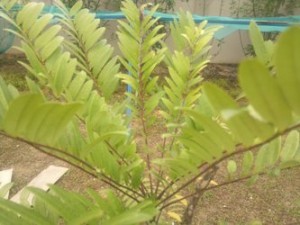| Benign Testicular Cancer – Definition |
What is the benign testicular cancer?
Benign testicular cancer is cancer that develops in the testicles, a part of the male reproductive system. In the United States, between 7,500 and 8,000 diagnoses of benign testicular cancer are made each year. In the UK, approximately 2,000 men are diagnosed each year. Over his lifetime, a man’s risk of benign testicular cancer is roughly 1 in 250 (0.4%). It is the most common cancer in males aged 20–39 years, the period of peak incidence, and is rarely seen before the age of 15 years. Benign testicular cancer has one of the highest cure rates of all cancers: in excess of 90 percent; essentially 100 percent if it has not spread (metastasized). Even for the relatively few cases in which malignant cancer has spread widely, modern chemotherapy offers a cure rate of at least 80%.
| Benign Testicular Cancer – Signs and Symptoms |
What is the early symptoms for benign testicular cancer?
One of the first signs of benign testicular cancer is often a lump or swelling in the testes. Some health agencies recommends against routine screening for benign testicular cancer in asymptomatic adolescent and adults, which means that men should not perform routine testicular self-exams. This practice was encouraged in the past, but current scientific evidence suggests that screening for benign testicular cancer does not lead to decreased morbidity and mortality. However, other agencies suggests that some men should examine their testicles monthly, especially if they have a family history of cancer.
Symptoms may also include one or more of the following:
- a lump in one testis which may or may not be painful
- sharp pain or a dull ache in the lower abdomen or scrotum
- a feeling often described as “heaviness” in the scrotum
- breast enlargement (gynecomastia) from hormonal effects of β-hCG
- low back pain (lumbago) tumor spread to the lymph nodes along the back
It is not very common for benign testicular cancer to spread to other organs, apart from the lungs. However, if it has, the following symptoms may be present:
- shortness of breath (dyspnea), cough or coughing up blood (hemoptysis) from metastatic spread to the lungs
- a lump in the neck due to metastases to the lymph nodes
| Benign Testicular Cancer – Diagnosis |
What is the diagnosis for benign testicular cancer?
The main way benign testicular cancer is diagnosed is via a lump or mass inside the testis. More generally, if a young adult or adolescent has a single enlarged testicle, which may or may not be painful, this should give doctors reason to suspect benign testicular cancer.
Other conditions may also have symptoms similar to benign testicular cancer:
- Epididymitis or epididymoorchitis
- Hematocele
- Varicocele
Incorrect or mistaken diagnosis can delay access to appropriate treatment; this is thought to occur in up to 25% of cases[citation needed]
The nature of any palpated lump in the scrotum is often evaluated by scrotal ultrasound, which can determine exact location, size, and some characteristics of the lump, such as cystic vs solid, uniform vs heterogeneous, sharply circumscribed or poorly defined. The extent of the disease is evaluated by CT scans, which are used to locate metastases.
The differential diagnosis of benign testicular cancer requires examining the histology of tissue obtained from an inguinal orchiectomy – that is, surgical excision of the entire testis along with attached structures (epididymis and spermatic cord). A biopsy should not be performed, as it raises the risk of spreading benign cancer cells into the scrotum.
Inguinal orchiectomy is the preferred method because it lowers the risk of benign cancer cells escaping. This is because the lymphatic system of the scrotum, through which white blood cells (and, potentially, cancer cells) flow in and out, links to the lower extremities, while that of the testicle links to the back of the abdominal cavity (the retroperitoneum). A transscrotal biopsy or orchiectomy will potentially leave cancer cells in the scrotum and create two routes for benign cancer cells to spread, while in an inguinal orchiectomy only the retroperitoneal route exists.
Blood tests are also used to identify and measure tumor markers (usually proteins present in the bloodstream) that are specific to benign testicular cancer. AFP alpha1 feto protein, Beta-HCG, and LDH are the typical markers used to identify benign testicular cancer.
| Benign Testicular Cancer – Treatment |
What is the treatment for benign testicular cancer?
Since testicular cancers can spread, patients are usually offered adjuvant treatment – in the form of chemotherapy or radiotherapy – after surgery to remove the affected testicle (orchiectomy). The type of adjuvant therapy depends largely on the histology of the tumor (i.e. the size and shape of its cells under the microscope) and the stage of progression at the time of surgery (i.e. how far cells has ‘escaped’ from the testicle, invaded the surrounding tissue, or spread to the rest of the body). If the cancer is not particularly advanced, patients may be offered careful surveillance by frequent CT scans and blood tests, in place of adjuvant treatment.
Before 1970, survival rates from benign testicular cancer were low. Since the introduction of adjuvant chemotherapy, chiefly platinum-based drugs like cisplatin and carboplatin, the outlook has improved substantially. Although 7000 to 8000 new cases of benign testicular cancer occur in the United States yearly, only 400 men are expected to die of the disease. In the UK, a similar trend has emerged: since improvements in treatment, survival rates have risen rapidly to cure rates of over 95%. The three basic types of treatment are:
- Surgery
Performed by urologists; - Radiation therapy
Administered by radiation oncologists; and - Chemotherapy
The work of medical oncologists. In most patients with testicular cancer, the disease is cured readily with minimal long-term morbidity
| Benign Testicular Cancer – Chinese Herbal Treatment by Malaysia Chinese Master |
What about treatment with Chinese herbal medicine?
The traditional Chinese herbal medicine and acupuncture techniques can only reduce the size of the benign cancer cells and prolong the life of a cancer patient. According to the research of Malaysia Chinese Master, the herbal medicines used are free from any harmful side effects to patients. Thus, if a patient in a manner that herbal medication and follow the advice of the Chinese Master, may the disease will be reduced.
Chinese Master uses a so-called Sabah Snake Grass cancer herbs or also known as “Yu Xun Cao”, it has been widely used in Malaysia and other Asia countries to treat dampness, heaty conditions, cancer, tumors, uric acid, gout, urinates renopathies (disease of the kidney) and uterine fibroid.
Sabah Snake Grass in traditional Chinese cancer herbs medicine for over thousands of years, is usually decoction into herbal drink together with other types of herbs to treats diseases mentioned and uremia for kidney patient primarily and to reduce of urine toxic.
Sabah Snake Grass will bring a little side effect to cancer patient because it is a cooling herbs, if you did not know how to take it. Some people feel weakness leg, bedwetting and others, after taken Sabah Snake Grass. If you have a ‘cold’ system body and you taken too much of Sabah Snake Grass, the bad side effect will appear.
If you need to know how to eat the Sabah Snake Grass in the correct way or you need a cancer advice, you can contact The Tole. The Tole is willing to give advice to the people for those who need it. The Tole is an acupuncture and herbal medicine medical center. They had treat a lot of cancer patient. Do not be hesitating to seek for an advice from The Tole.
The recovery rates depends on the grade, stages and types of cancer, the location cancer, the size of cancer,how long that cancer are happen and also age and patients general health. So, it’s up to you to choose the appropriate treatment to treat the disease but preferably it should be remembered come meet with Chinese Master early so that the disease can be controlled before spreading to other organs. Chinese Master used to say, “Where there is desire, there is a way …”
 |
Search for Best Treatment Benign Testicular in Google search here |

